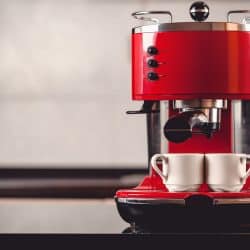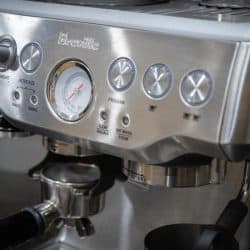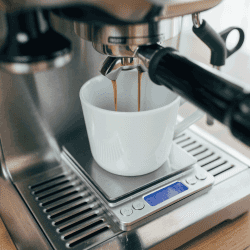A cursory look inside the portafilter of your Breville Barista Express will draw your attention to a piece of black plastic. It looks like it can be removed, which might tempt you to take that piece out and discard it. But should you? We researched this popular machine from multiple professional sources, so you'll know what to do.
The black plastic piece inside the Breville portafilter is made to keep the heat from sapping away. It also allows the water to drip evenly through the rest of the portafilter. This plastic piece should not be removed.
Now that we know that you shouldn't remove the plastic piece from the Breville portafilter, we'll look at what can happen if you do. You might also be wondering if you have to wash the portafilter after every use or if the portafilter needs to be warmed up. For the answers to these questions and more, read on to see what our research has uncovered.
Why You Should Leave the Plastic Inside the Breville Portafilter
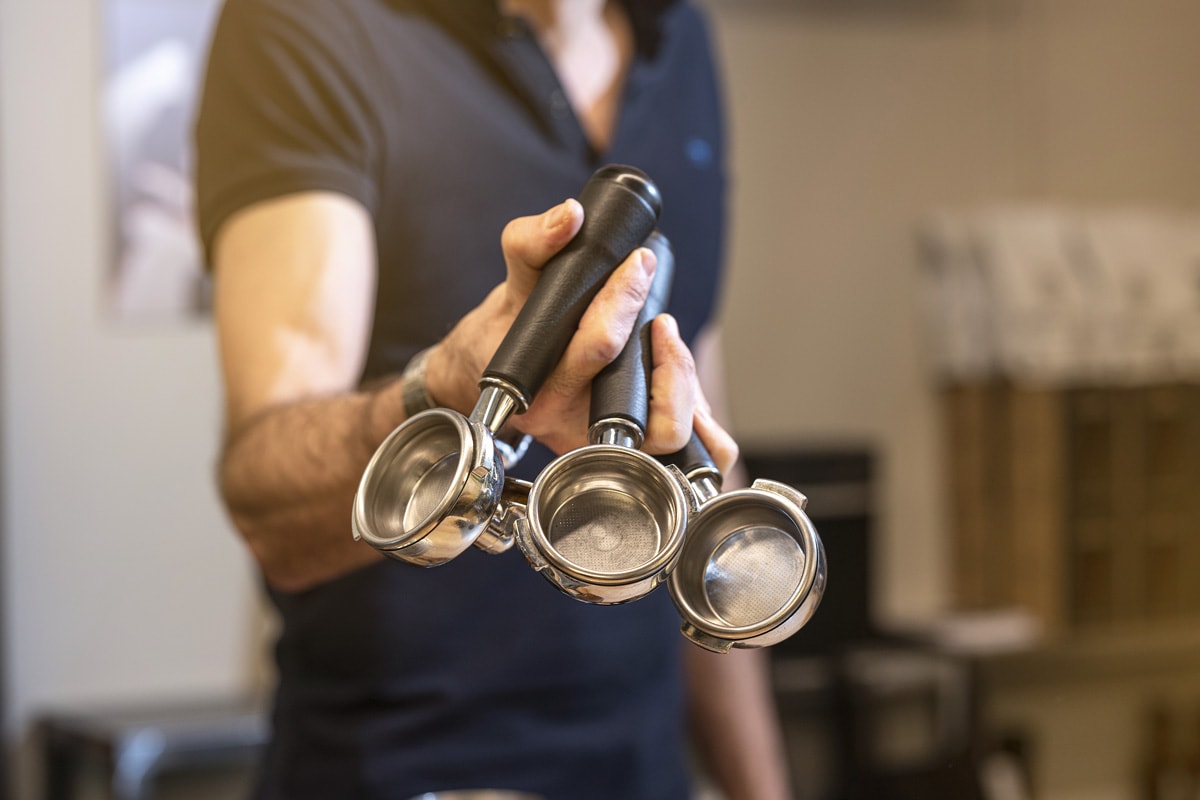
Some parts that come with your Breville espresso machine can be removed. You might be tempted to take out the plastic insert from its portafilter based on what you have seen posted online. After researching the posted reasons for doing so and studying the consequences, we've concluded that it's best to keep this insert in place.
Below we've listed the main reasons why this plastic insert should stay where it is. If you're still considering taking this piece out, carefully review the following pieces of information from our research.
The plastic insert keeps the water at the correct temperature
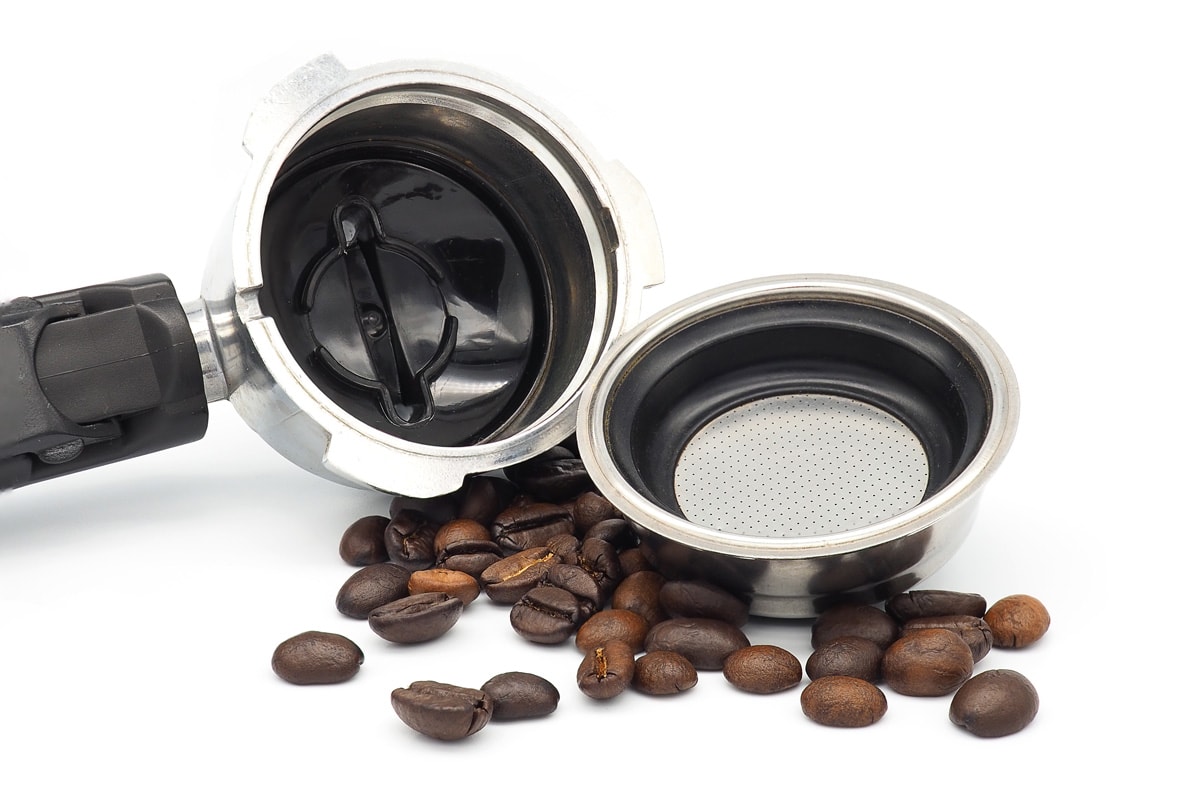
The plastic insert serves a vital purpose. When the water flows into the portafilter, it needs to maintain a certain temperature so that it makes the best espresso possible. If you take this piece out, the water will come into direct contact with the metal portafilter.
The metal will most likely be much colder than the plastic. This will reduce the temperature of the water coming out of the portafilter, thus interfering with the consistency and temperature of the espresso.
Keeping the plastic in place saves you time and makes better espresso
If you remove the plastic, it is still possible to avoid the metal from cooling the water temperature. To do this, you'll need to run the machine through at least a few cycles without any coffee. This will gradually heat the metal parts of the portafilter to a temperature that's desired.
But this takes time. By simply leaving the plastic part inside the portafilter, you'll not need to "warm it up." This can save you some precious time during hectic mornings.
Removing the plastic insert may void the machine's warranty
These machines are tough and built to last. But even the best espresso makers come with a warranty if only to give the consumer peace of mind. If your Breville malfunctions, it's nice to know that it's covered for a time after you've begun to use it.
Any alteration to the machine may void the warranty, however. By removing any of its parts, even something like the plastic in the portafilter, you may risk losing that valuable assurance from the manufacturer.
If you are considering removing the plastic or altering the machine in any way, be sure that you are fully aware of the risks involved. One seasoned professional discusses why you should leave the plastic inside the portafilter below:
Should I Wash the Portafilter After Every Use?
As with anything food or beverage-related, cleanliness is important for ensuring good health practices. You will want to keep the machine clean. But that doesn't mean that you will need to wash its portafilter after every single use.
A quick wipe-down after each shot it pulls is perfectly fine, especially if you are making a bunch of them in a short time frame. Rinsing the portafilter after every few shots work great. This keeps any buildup from occurring.
If you have this for home use and are only pulling a shot or two a day, it's recommended to wash the portafilter after you are done with the machine for the day. This keeps buildup from occurring and stops bacteria from developing and growing.
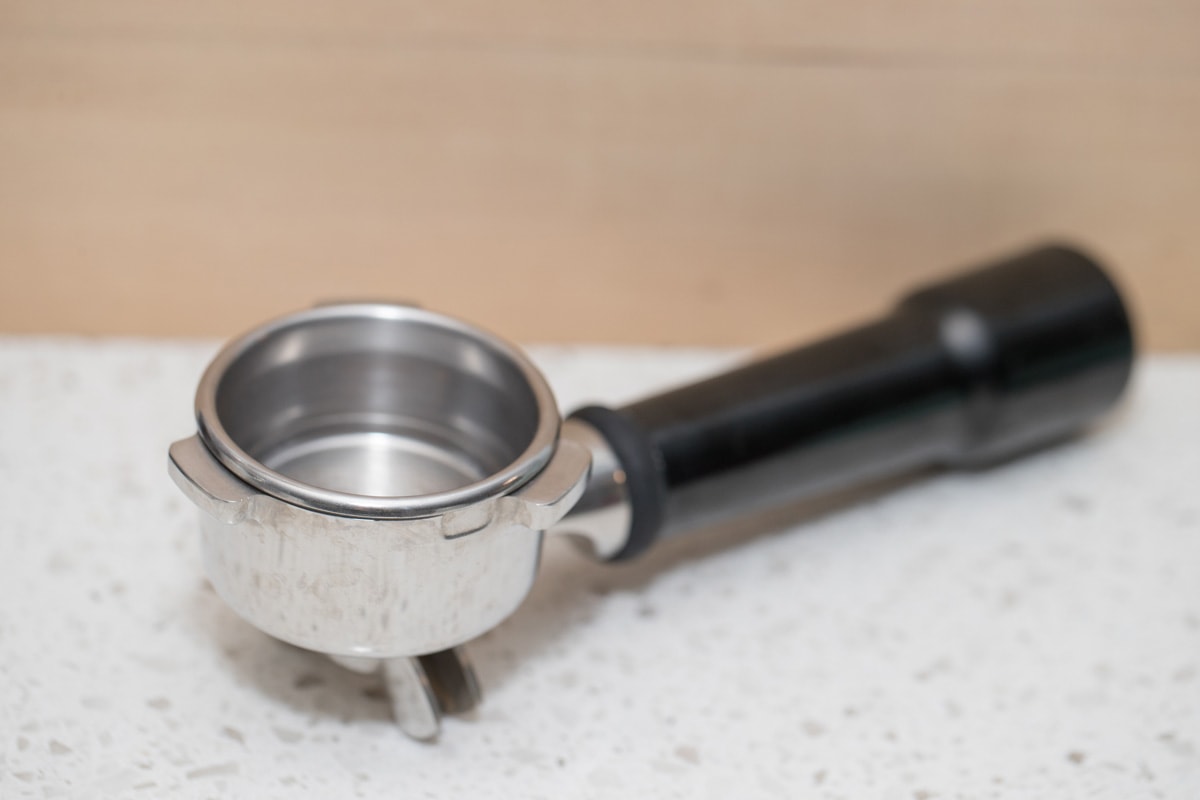
Does the Portafilter Need to be Warmed Up?
You might have seen someone warming up the portafilter by running cycles through it before they pull a shot of espresso. But as long as you are following protocol, it won't take long to do this.
If it's your first shot of the day, run an empty one through. This will warm up the portafilter and the plastic piece inside it to the right temperature after just one quick cycle. The plastic will be much warmer than the metal that houses it, making it unnecessary to do this multiple times.
But if the plastic piece is removed, you'll find that it will take several empty shots before the metal is at the right temperature. As we pointed out earlier in this post, you should leave the plastic piece inside the portafilter for the best espresso shots and the least amount of effort.

How To Clean a Breville Portafilter
Cleaning the portafilter is important for sanitary reasons. A clean portafilter also means a better-quality shot of espresso. Thankfully, cleaning this part isn't too bothersome or time-consuming.
When it's time to clean your Breville portafilter, remove it from the machine. The basket should also be taken out and cleaned. These parts should be washed with hot water and detergent and carefully scrubbed with a brush.
Alternatively, you can soak these parts in hot water that you've applied a cleaning tablet.
You can keep buildup from happening as quickly if you run an empty shot of hot water through the portafilter after every few shots of espresso that you pull. This will save time, though you'll still need to clean these parts thoroughly at some point.
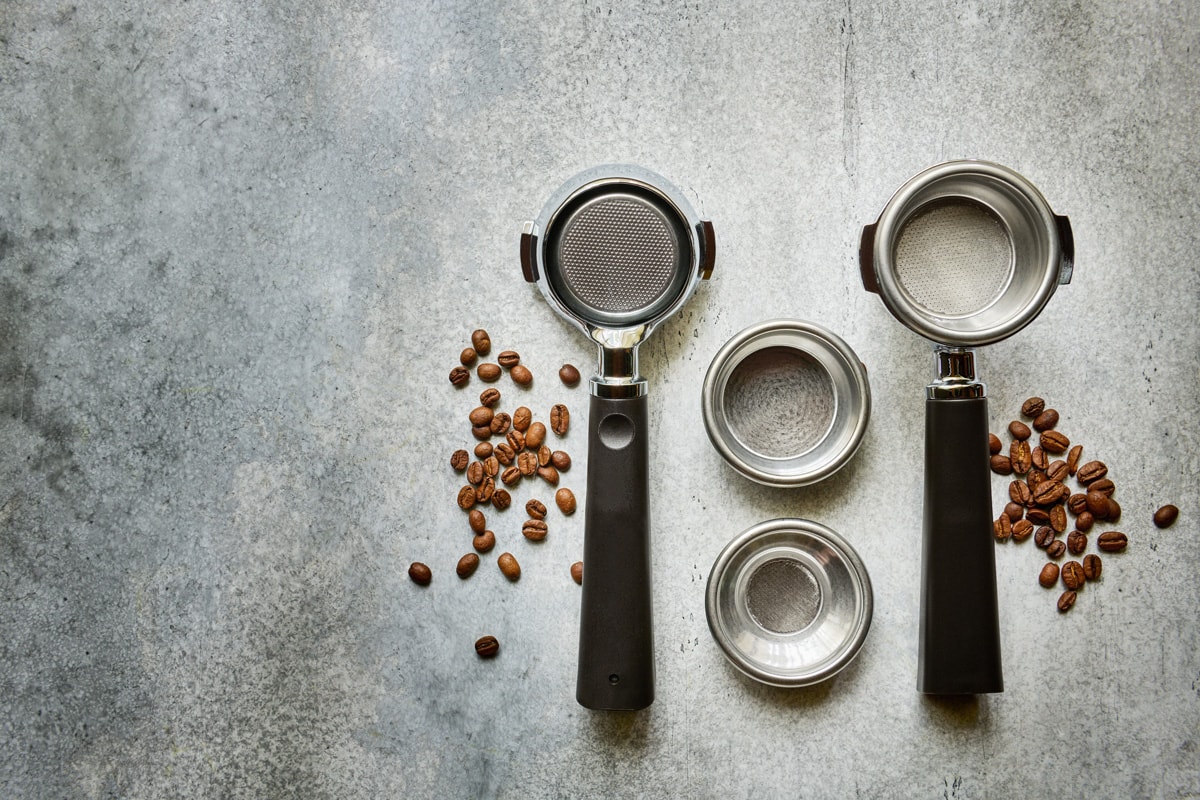
Can You Tamp Too Hard?
Learning the correct techniques behind making a great espresso can take a little bit of time and practice. But it's not rocket science. Once you've got it down, you'll be pulling great shots just like the pros.
One thing newbies at espresso-making might be making mistakes with is the tamping. It's possible to over-tamp and adversely affect the quality of the espresso shot.
You want the grounds to be tamped firmly but not so tight that the water has trouble soaking through them. If the grounds are packed too tightly, the resulting shot will be pretty bitter tasting, as the grounds have been oversaturated with hot water.
So how hard should I tamp?
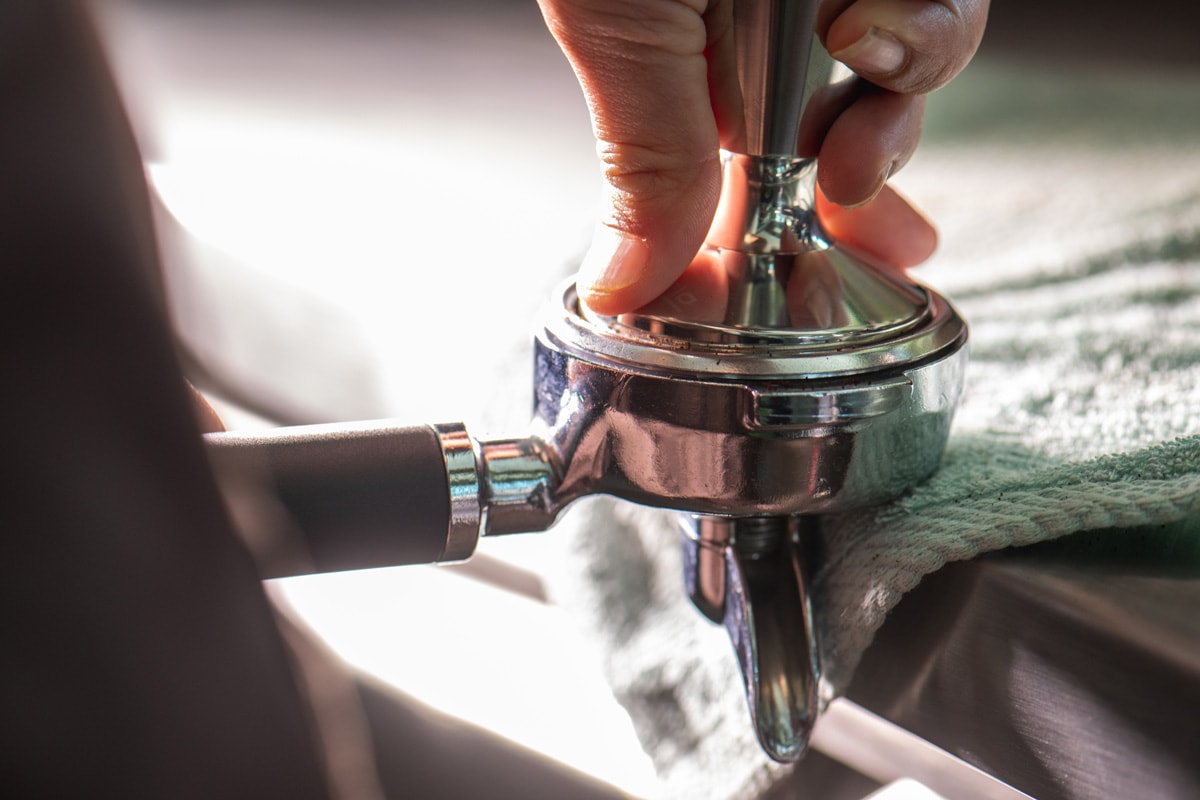
Once you've filled the portafilter with the right level of grounds and leveled them off, it'll be ready to be tamped. With the basket on a flat surface and the portafilter handle in one hand, place the tamper on top of the portafilter with your other hand.
It's recommended to apply between 20 and 30 pounds of pressure when you tamp. This can take some practice to get just right. If you've never done it, all you need is a bathroom scale.
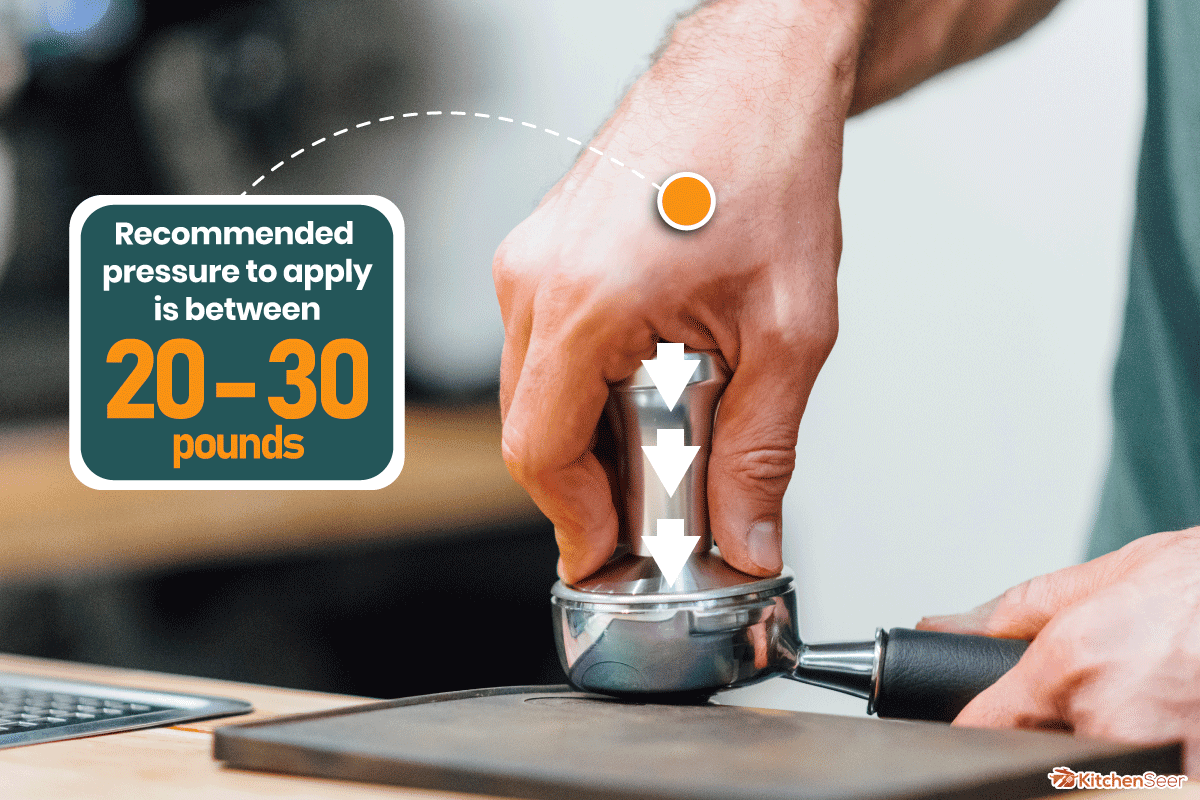
Press the palm of your hand onto the surface of the scale until it reads 25 pounds. This will give you a great idea of how hard you need to tamp. Practice it a few times until you develop the muscle memory for it, and you'll be tamping with perfection.
In Conclusion
It's important to leave that plastic piece inside your Breville portafilter so you can save time and still make a quality shot of espresso.
You risk voiding the warranty on the espresso machine by removing or altering any parts, so it's best to just leave that plastic piece be. With some practice, you'll be able to use your Breville to make great espresso shots, just like a barista.
We hope this post on the Breville machine answers all your questions. For additional information, we suggest reading the following posts:
Nespresso Frother Blinking Red Light – What To Do?
How Often Should You Backflush An Espresso Machine?
Can You Make Hot Chocolate In An Espresso Machine


